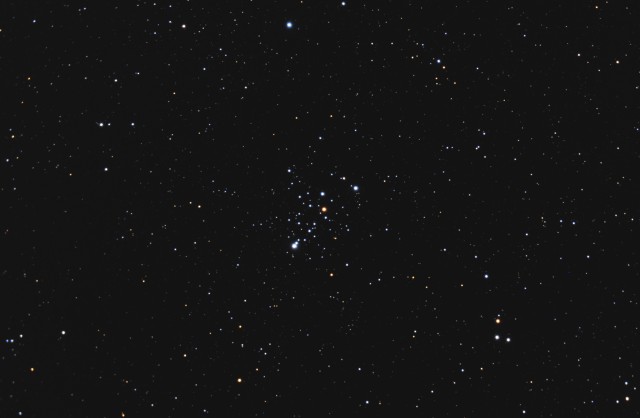
A bright moon precludes imaging dim nebula or galaxies, but not open clusters. Here’s one in Cassiopeia I’ve not imaged in quite some time, if ever.

A bright moon precludes imaging dim nebula or galaxies, but not open clusters. Here’s one in Cassiopeia I’ve not imaged in quite some time, if ever.
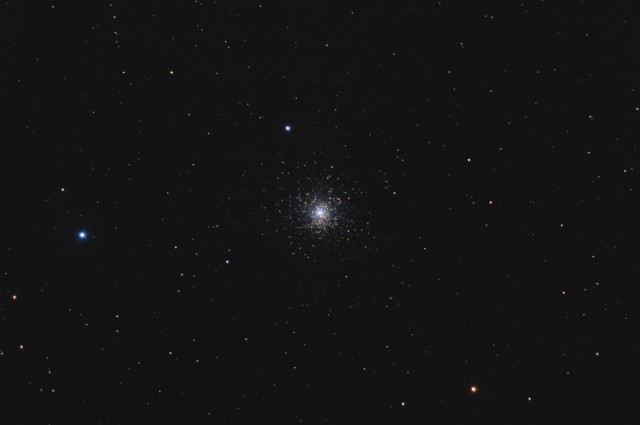
It has been so long since I imaged with the C8 I forgot how big a globular would look in it. To satisfy my curiosity, I shot M15 at the start of my imaging session on Nov 29, 2014. I had to crop out the distortion in the corners, so this is roughly a 60% crop of the central region.
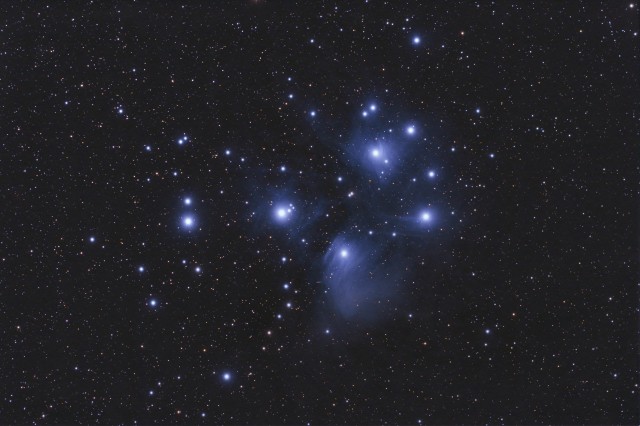
I had time to kill while waiting for Orion to get into position, so I shot 40 x 2 minute sub-images of the Pleiades at ISO 3200. I did not spend much time in post processing this, but it came out half-decent regardless.
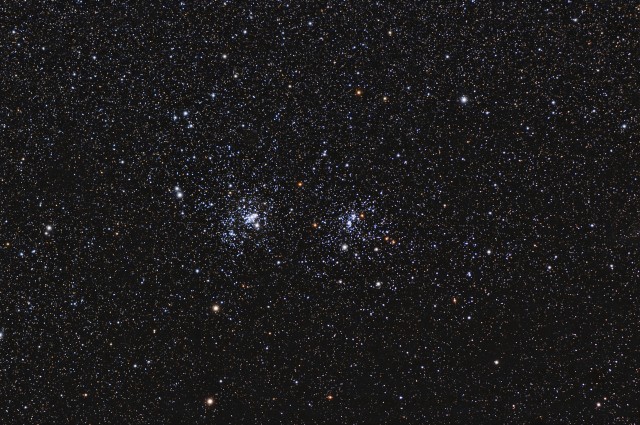
A bright moon precluded shooting any dim deep sky objects (DSO’s.) Star cluster are still viable targets, though. I had time to kill so I picked the most photogenic star cluster(s) to shoot – the Double Cluster.
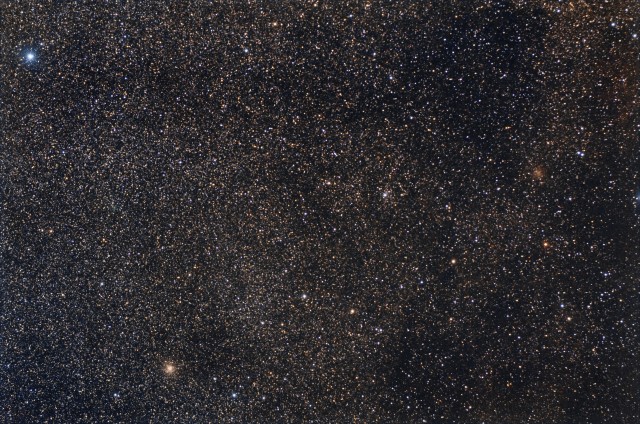
Two globular clusters in Aquila and a very tiny comet are visible in this image. I only wanted to check the size of Comet Jaques on this night, since I missed imaging it when it was at it’s best. I regret that I did not get a chance to shoot it back then, but at least I finally got to see it.
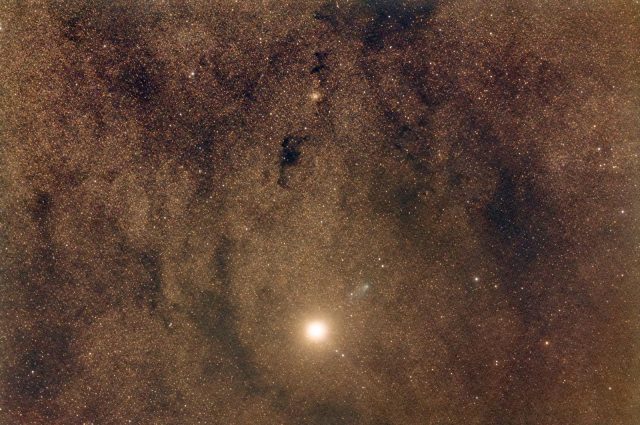
Update October 20, 2014: The above image is an update with more time added. Compare it to the image below which was made with only 20 minutes of data shot at ISO 6400 (20×60 sec sub-images.) I took an additional 30 minutes of 3 minute sub-images at ISO 1600 and added it in, so the combined total is 50 minutes.
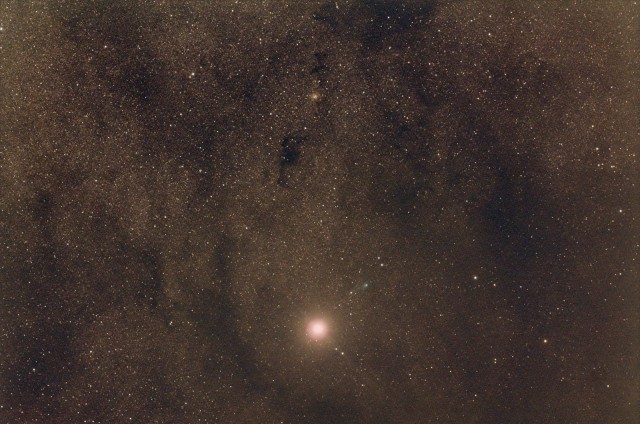
Well, the big comet encounter of the year took place tonight, Oct 19, 2014 and Mars and Comet Siding Spring (C/2013 A1) both survived. LoL. Seriously, it was a very close encounter if you had darkness when it was closest. Here in southern Louisiana, it took place during daylight, so I had to catch it after closest approach as C/2013 A1 was bidding Mars farewell.
I had a strange night with some issues, but I managed to get some decent data and also lucked out with some good weather for this event. This image is from the first set of images I took and it is a composite of comet-only processed and star background processed image stacks. The comet moved a good distance in the twenty-five minutes it took to get the sub-frames, so I had to isolate it with different alignment and stacking techniques than I use for normal deep-sky images.
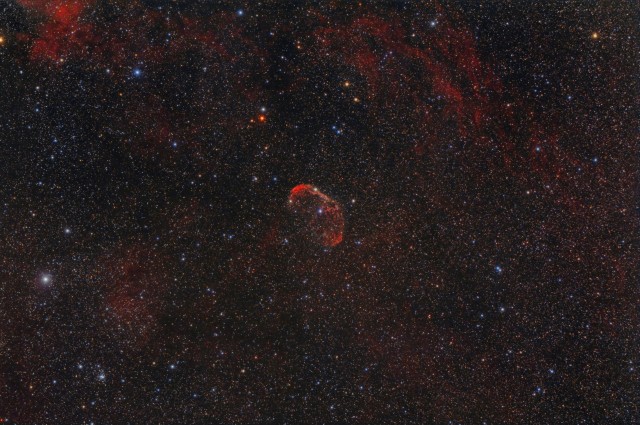
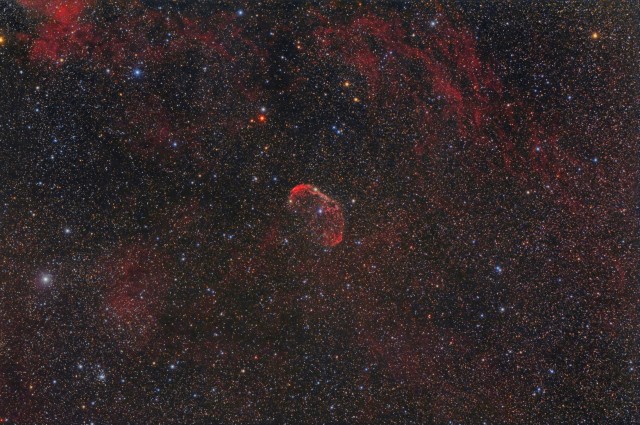
A mosaic of the Crescent Nebula area. Exposures from 4 different years were used. The base image was acquired on Nov 2, 2013 and was 40x60sec ISO 6400. I imaged it again on October 17, 2014 with 77 images and added that into the mix. Two nights of imaging in Nov 2010 of 9×720″ ISO400, 11×480″ ISO800 sub-images were also added in (for a total of 5.21 hours integration time.) Finally, data from an image of just the Crescent Nebula itself, taken with my SN-8 telescope was used and it was made with 57×180″ ISO 1600 sub-images taken on Oct 1, 2007.
I used RegiStar to manipulate the data. The beauty of software like RegiStar is that it can combine data taken years apart. In this case, over 7 years. I was able to take the nebulosity caught with a high ISO stack of sub-images, but with a noisy background and combine it with stacks of subs taken at lower ISO values which had a much smoother background. The stacked mosaic-like result let me bring out more of the dim nebulosity that pervades the Crescent Nebula area and keep the noise at bay, somewhat. A little more detail in the Crescent itself was enhanced with data from my larger, 8″ scope.
I present a regular version and an enhanced, lighter version that was generated from the data in the first image with Starizona’s Levelizer plug-in for PS.